Linda Carrara. Se il paesaggio è simbolico

Se il paesaggio è simbolico, Boccanera Gallery
From 26 January 2023 to 11 March 2023
Milan
Place: Boccanera Gallery
Address: Via Giovanni Ventura 6
Responsibles: Linda Carrara
Telefono per informazioni: +39 0461 984206
E-Mail info: info@boccaneragallery.com
Official site: http://www.boccaneragallery.com
Boccanera Gallery is pleased to present Se il paesaggio è simbolico, a group show designed by the artist Linda Carrara, who has been collaborating with the gallery for years. The exhibition will be held at the Boccanera Gallery Milan from 26 January to 11 March 2023.
The exhibition project proposes a choral vision against the individual artistic act and personal expression: therefore, Linda Carrara decided to open up her solo show to dialogue with other artists, whom she considers similar to her poetic research, as well as her way of working, to operate and think.
Alongside the works of Linda Carrara, Se il paesaggio è simbolico displays the artworks of Giuseppe Adamo, Lorenzo di Lucido, Silvia Giordani, Vera Portatadino and Fabio Roncato.
Se il paesaggio è simbolico deals with the themes of matter, in universal and artistic terms, and creation, both within the natural elements and human actions. The exhibition investigates the mat- ter transformation through an alchemical-like process of art-making, exploiting and collaborating with the true essence of Nature in order to give life to something else, creating a threshold for the afterlife but also what is below the surface of the visible.
In Se il paesaggio è simbolico, the landscape representation is converted, sediments and changes following the natural laws of erosion and randomness, moulding itself according to the principles of geology and natural events.
Linda Carrara (Bergamo, 1984) proposes an acute metalinguistic research on pictorial technique, investigating nature as a generating and inspiration source for her still-lives and landscape vision. In her most recent work, she aims at the essentiality abandoning the classical figuration and remaining in an indefinite limbo between two realities. Her works model the pictorial material rather than paint it, evoking almost primordial visions and experiences. With the frottage technique, mainly used through oil on canvas, Carrara creates allusions to places, worlds and materials without providing a visual representation but directly stealing forms from the landscape. This technique makes us lose in the matter of nature and in the painting itself.
Giuseppe Adamo (Alcamo – Trapani, 1982) – represented by RizzutoGallery – proposes works characterised by a free pictorial language of narrative necessities, moving along the ridge between figuration and abstraction. His works are smooth and polished surfaces, devoid of material thickness, from which three-dimensional shapes emerge through a very fluid painting, overlapping, transparencies and tonal variations. The work seems to be both an exploration under the microscope and a bird’s eye view, a recording of geographical maps: the ultra-flat image overturns in an almost rocky density, the monochrome matter clings to the possibility of a pattern closed, a form stranded in the pictorial plot between the nature archaeology and hallucination, proposing perceptive deceptions.
Lorenzo di Lucido (Penne – Pesaro, 1983) has developed a work cycle that focuses on the fundamentals of looking at images, in which the key elements are light and surface. For di Lucido, pictures on the painted surface have reached a certain degree of tension. Thus the painting might also be made by juxtaposed signs without a continuity solution until they obtain a degree of tension suitable for sufficient pictorial quality. His oil paintings’ layers expand over time, using different shades of green to get a colour that can simultaneously absorb and reject the light. They are works designed exclusively for the human tactile and eye’s capabilities, in which photographic reproduction is rejected and often questioned.
Silvia Giordani (Vicenza, 1992) focuses on landscape and its alteration through pictorial practice. Her paintings result from the reworking of collected objects in a virtual archive. The reblended forms are placed in open and suspended places, creating a new perspective of nature through flat or gradient backgrounds and cancelling out the area specificity. Giordani’s research focuses on the definition of forms and their complementary relationship with space.
Vera Portatadino’s practice (Varese, 1984) situates in the anti-narrative field, in which the ideas of figuration and abstraction turn out to be ineffective categories. Her works don’t illustrate or explain but evoke and suggest, turning the painting grammar into an object of study. Portatadino works on canvases and wooden boards through a philosophical and contemplative gaze, building textures and patterns on which specific elements crystallise. Her artworks raise questions about the relationship between human beings, time and nature through an ecological perspective. The ideas of beauty, pleasure, transience and an obsession with the marginal characterise her theoretical research.
Fabio Roncato (Rimini, 1982) focuses on visual representation boundaries, investigating forms, elements, nature and contemporaneity’s energies. His purpose is to lead the artistic practice within the critical issues related to the relationship between reality understanding and perception limits imposed by the senses. Therefore the artworks are always unpredictable due to their spontaneous modelling. Within his artistic practice, imagination plays a decisive role.
Opening 26.01.2023 4pm – 9pm
The exhibition project proposes a choral vision against the individual artistic act and personal expression: therefore, Linda Carrara decided to open up her solo show to dialogue with other artists, whom she considers similar to her poetic research, as well as her way of working, to operate and think.
Alongside the works of Linda Carrara, Se il paesaggio è simbolico displays the artworks of Giuseppe Adamo, Lorenzo di Lucido, Silvia Giordani, Vera Portatadino and Fabio Roncato.
Se il paesaggio è simbolico deals with the themes of matter, in universal and artistic terms, and creation, both within the natural elements and human actions. The exhibition investigates the mat- ter transformation through an alchemical-like process of art-making, exploiting and collaborating with the true essence of Nature in order to give life to something else, creating a threshold for the afterlife but also what is below the surface of the visible.
In Se il paesaggio è simbolico, the landscape representation is converted, sediments and changes following the natural laws of erosion and randomness, moulding itself according to the principles of geology and natural events.
Linda Carrara (Bergamo, 1984) proposes an acute metalinguistic research on pictorial technique, investigating nature as a generating and inspiration source for her still-lives and landscape vision. In her most recent work, she aims at the essentiality abandoning the classical figuration and remaining in an indefinite limbo between two realities. Her works model the pictorial material rather than paint it, evoking almost primordial visions and experiences. With the frottage technique, mainly used through oil on canvas, Carrara creates allusions to places, worlds and materials without providing a visual representation but directly stealing forms from the landscape. This technique makes us lose in the matter of nature and in the painting itself.
Giuseppe Adamo (Alcamo – Trapani, 1982) – represented by RizzutoGallery – proposes works characterised by a free pictorial language of narrative necessities, moving along the ridge between figuration and abstraction. His works are smooth and polished surfaces, devoid of material thickness, from which three-dimensional shapes emerge through a very fluid painting, overlapping, transparencies and tonal variations. The work seems to be both an exploration under the microscope and a bird’s eye view, a recording of geographical maps: the ultra-flat image overturns in an almost rocky density, the monochrome matter clings to the possibility of a pattern closed, a form stranded in the pictorial plot between the nature archaeology and hallucination, proposing perceptive deceptions.
Lorenzo di Lucido (Penne – Pesaro, 1983) has developed a work cycle that focuses on the fundamentals of looking at images, in which the key elements are light and surface. For di Lucido, pictures on the painted surface have reached a certain degree of tension. Thus the painting might also be made by juxtaposed signs without a continuity solution until they obtain a degree of tension suitable for sufficient pictorial quality. His oil paintings’ layers expand over time, using different shades of green to get a colour that can simultaneously absorb and reject the light. They are works designed exclusively for the human tactile and eye’s capabilities, in which photographic reproduction is rejected and often questioned.
Silvia Giordani (Vicenza, 1992) focuses on landscape and its alteration through pictorial practice. Her paintings result from the reworking of collected objects in a virtual archive. The reblended forms are placed in open and suspended places, creating a new perspective of nature through flat or gradient backgrounds and cancelling out the area specificity. Giordani’s research focuses on the definition of forms and their complementary relationship with space.
Vera Portatadino’s practice (Varese, 1984) situates in the anti-narrative field, in which the ideas of figuration and abstraction turn out to be ineffective categories. Her works don’t illustrate or explain but evoke and suggest, turning the painting grammar into an object of study. Portatadino works on canvases and wooden boards through a philosophical and contemplative gaze, building textures and patterns on which specific elements crystallise. Her artworks raise questions about the relationship between human beings, time and nature through an ecological perspective. The ideas of beauty, pleasure, transience and an obsession with the marginal characterise her theoretical research.
Fabio Roncato (Rimini, 1982) focuses on visual representation boundaries, investigating forms, elements, nature and contemporaneity’s energies. His purpose is to lead the artistic practice within the critical issues related to the relationship between reality understanding and perception limits imposed by the senses. Therefore the artworks are always unpredictable due to their spontaneous modelling. Within his artistic practice, imagination plays a decisive role.
Opening 26.01.2023 4pm – 9pm
SCARICA IL COMUNICATO IN PDF
COMMENTI

-
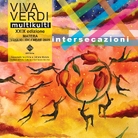 Dal 15 July 2025 al 19 December 2025
Matera | Sedi varie
Dal 15 July 2025 al 19 December 2025
Matera | Sedi varie
-
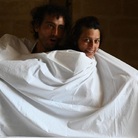 Dal 15 July 2025 al 21 July 2025
Matera | Fondazione Le Monacelle
Dal 15 July 2025 al 21 July 2025
Matera | Fondazione Le Monacelle
-
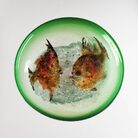 Dal 12 July 2025 al 24 November 2025
Venezia | Museo del Vetro
Dal 12 July 2025 al 24 November 2025
Venezia | Museo del Vetro
-
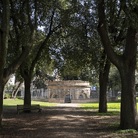 Dal 11 July 2025 al 21 September 2025
Roma | Loggia dei Vini - Villa Borghese
Dal 11 July 2025 al 21 September 2025
Roma | Loggia dei Vini - Villa Borghese
-
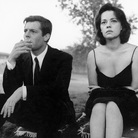 Dal 10 July 2025 al 10 August 2025
Roma | Palazzo Esposizioni Roma
Dal 10 July 2025 al 10 August 2025
Roma | Palazzo Esposizioni Roma
-
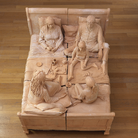 Dal 10 July 2025 al 3 November 2025
Casale Marittimo | Bolgheri, Castagneto Carducci, Casale Marittimo
Dal 10 July 2025 al 3 November 2025
Casale Marittimo | Bolgheri, Castagneto Carducci, Casale Marittimo


